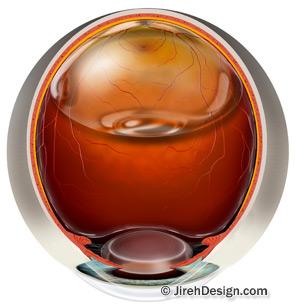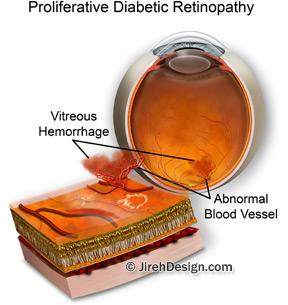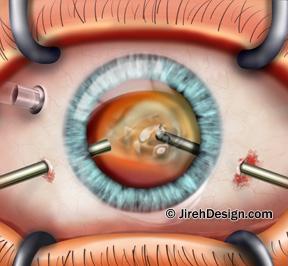Vitrectomy eye surgery for floaters and hemorrhage
Pars plana vitrectomy eye surgery is a procedure that cleans out eye floaters or vitreous hemorrhage inside the eye. Watch a […]


Vitrectomy eye surgery for floaters and hemorrhage
Pars plana vitrectomy eye surgery is a procedure that cleans out eye floaters or vitreous hemorrhage inside the eye. Watch a […]
Pars plana vitrectomy eye surgery is a procedure that cleans out eye floaters or vitreous hemorrhage inside the eye.
The vitreous is normally a clear, jelly-like fluid that fills the inside of the eye. Various eye disease complications can cause the vitreous to cloud, fill with blood or even harden so that light entering the eye is unable to reach the retina properly.
What is vitrectomy surgery?
A vitrectomy is a surgical procedure that removes the vitreous in the central cavity of the eye so that vision can be corrected. It is beneficial in many eye conditions including diabetic eye disease (diabetic retinopathy), retinal detachments, macular hole, macular pucker and vitreous hemorrhage. Also see “Human Eye” animation
How is a vitrectomy done?
The vitrectomy procedure is typically an outpatient procedure. Rarely, an overnight stay in the hospital is required.
Your surgeon will use local or general (while you are asleep) anesthesia. He then holds the eye open using a special speculum and covers the eye that is not being operated on.
The begin the procedure, Dr. Deupree makes a small slit in the side of the eye then inserts an infusion line to maintain constant eye pressure. See the animation. Next, he inserts a microscopic cutting device which will aspirate (suck out) the vitreous fluid.
He illuminates the inside of the eye throughout the procedure with a microscopic light source. Additional instruments are ready to perform other maneuvers such as cauterizing blood vessel leaks or removing scar tissue.
Dr. Deupree looks through a microscope while performing the procedure. He may also use special lenses to help see the anatomy of the eye.
After removing the vitreous, the surgeon refills the eye with a special saline solution that closely resembles the natural vitreous fluid in your eye. He closes the three small openings with tiny absorbable stitches and uses antibiotic injections to prevent infection at the end of the procedure.
Vitrectomy risks
Vitrectomies have been commonly performed and perfected for over 30 years. However, certain risks do exist. They include:
- retinal detachment
- development of glaucoma (increased pressure in eye)
- cataract formation or progression
- bleeding and/or infection inside or outside of eye
- red or painful eye
- loss of depth perception, blurring of vision, double vision, or blindness
- swelling of layer under the retina (choroidal effusion)
- change in focus, requiring new spectacle lenses (refractive changes)
- wrinkling of retina (macular pucker)
- swelling of the center of retina (cystoid macular edema)
- loss of night vision or distortion of vision
- loss of eye (extremely rare)
- need for additional treatment and/or surgery

The retinal detachment will heal during the normal vitrectomy healing time, which is between 4 to 6 weeks. Normal restoration of vision can take several weeks. Your surgeon will restrict physical activity during this time to prevent complications.
Postoperative Instructions
Since vitrectomy is often performed along with other procedures, postoperative instructions may vary. So here are some general guidelines: always consult with your surgeon for specific instructions.
- Begin using any anti-inflammatory and antibiotic drops provided by your physician immediately after your eye patch comes off.
- Wear the plastic eye shield (if directed) when sleeping for the first 5-7 days following surgery. You should wear the shield for the first 3 days following surgery when showering.
- Avoid bending, stooping, lifting objects over 5 pounds, or any strenuous activity for one week (unless your physician advises otherwise).
- Take Tylenol E.S. (if Dr. Deupree advises) or gently apply ice compresses to the eye to relieve mild discomfort.
- Follow any special instructions your physician for head positioning (this is not necessary in all cases).
Links:
Small incision Vitrectomy advancements








